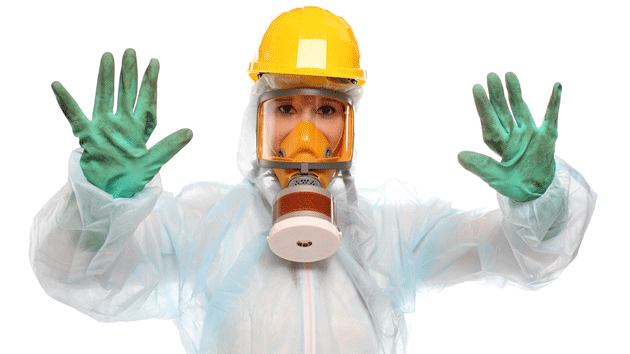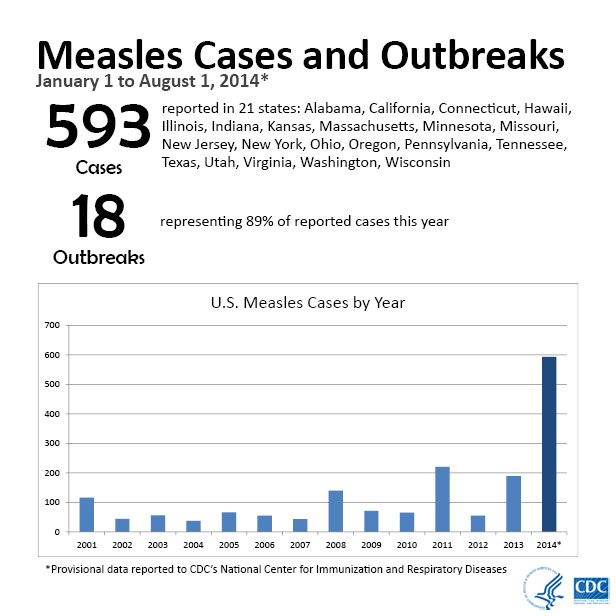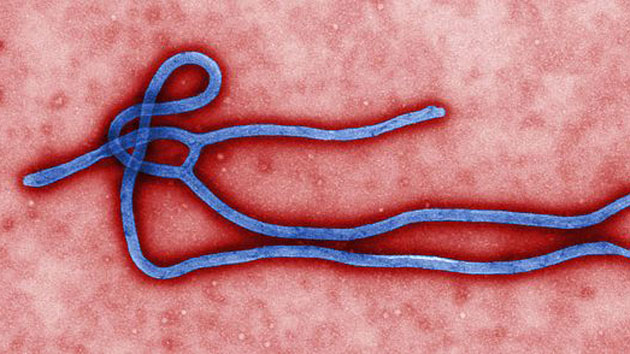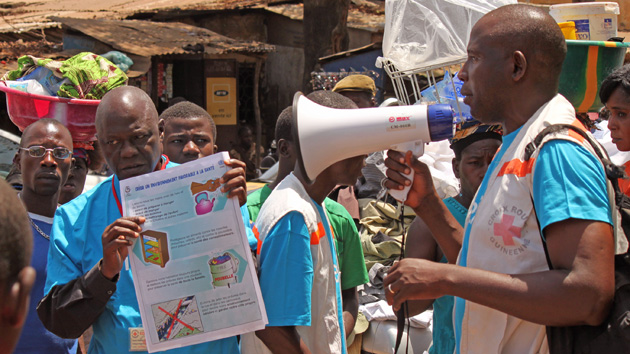
<a href="http://www.shutterstock.com/pic-74578822/stock-photo-female-activist-in-protective-suit-for-bio-hazard-on-white-background.html?src=grzfr2XWjBZaWjtoEwxF1Q-1-13" target="_blank">kletr</a>/Shutterstock
Given the obsessive coverage of two American aid workers being treated for Ebola in Atlanta, you’d think we’re days away from a stateside outbreak. PSA: We’re not. To date, not a single person has ever contracted Ebola in the United States. The likelihood that two isolated patients will spread the disease is nearly zilch. If you’re hell-bent on worrying about getting a disease, though, fear not—there are plenty to go around. I asked infectious disease experts on which pathogens they found most frightening. Here’s what they said:
- Influenza: Most of the experts I talked to put this at the top of their lists. William Schaffner, an infectious disease specialist at Vanderbilt University School of Medicine and a former president of the National Infectious Disease Foundation, notes that the flu kills 36,000 people every year and sends about 200,000 to the hospital. “That is a very serious matter—and one where we can offer ourselves and those around us protection by getting vaccinated,” he says. Although many people think that the flu is only dangerous for the very old, the very sick, and the very young, that’s not always true: Last season’s flu strain was especially bad for young adults. In a typical year, only a third of Americans get flu vaccines.
- HPV: A staggering 79 million Americans—more people than live in California, Texas, and Illinois combined—are currently infected with human papillomavirus, which can cause cancers of the cervix, vulva, anus, head, and neck. Like measles, HPV can be prevented with a vaccine. Although the immunization—a series of three shots—is recommended by the Advisory Committee on Immunization Practices for preteens and teens, it’s underutilized: In 2013, just 38 percent of teen girls and 14 percent of boys had received all three shots. The CDC estimates that wider use of the vaccine could prevent 21,000 HPV-related cancers every year. “For Pete’s sake,” says Schaffner. “It’s an anti-cancer vaccine.”
- Measles: The CDC reports that measles cases in the United States have skyrocketed in 2014:

Measles can cause serious illness in children; infections can lead to pneumonia and, more rarely, encephalitis. According to the CDC, about one in every thousand children who contract measles will die. Unlike Ebola, measles can be easily prevented with a vaccine. This year’s spike in cases has been largely due to unvaccinated people. The CDC notes: “90 percent of all measles cases in the United States were in people who were not vaccinated or whose vaccination status was unknown. Among the U.S. residents who were not vaccinated, 85 percent were religious, philosophical or personal reasons.” To see how many anti-vaxxers live near you, check out our map.
- Antibiotic-resistant infections: Recently, some pathogens have evolved to withstand the drugs that used to kill them. The World Health Organization sees this threat as dire. “A post-antibiotic era, in which common infections and minor injuries can kill, far from being an apocalyptic fantasy, is instead a very real possibility for the 21st century,” the organization notes. Urinary tract infections caused by drug-resistant E. coli are increasingly common, as are infections caused by methicillin-resistant Staphylococcus aureus (MRSA)—rates of which doubled at academic hospitals between 2003 and 2008. The WHO notes that gonorrhea, which used to respond well to common antibiotics, “may soon become untreatable as no vaccines or new drugs are in development.” According to Stuart B. Levy, a researcher and physician at Tufts University’s Center for Adaptation Genetics and Drug Resistance, it’s a myth that only hospital patients get these scary bugs. “These diseases—you could pick them up anywhere,” he says. “The threat is very real.”
- Foodborne illness: Pathogens in our food such as E. coli, salmonella, listeria, campylobacter, and norovirus annually sicken one in six Americans, send 128,000 to the hospital, and kill 3,000. Unfortunately, there are no vaccines to stop these bugs, so the best way to prevent their spread is by carefully monitoring the food supply. Unfortunately, cuts to both federal and state budgets have meant that food inspectors are stretched thin. This year, the Obama administration cut 262 positions from the US Department of Agriculture’s Food Safety Inspection Service. As my colleague Tom Philpott reported, the USDA has proposed new rules that would allow poultry plants to speed up production while decreasing the number of inspectors. And it’s not just federal food inspection that’s suffering: A report (PDF) last year by the National Environmental Health Association found decreasing salaries, high rates of turnover, and frequent staff furloughs at state and local agencies that inspect food. A sobering 60 percent of local agencies reported that they didn’t have enough resources to investigate outbreaks.
















